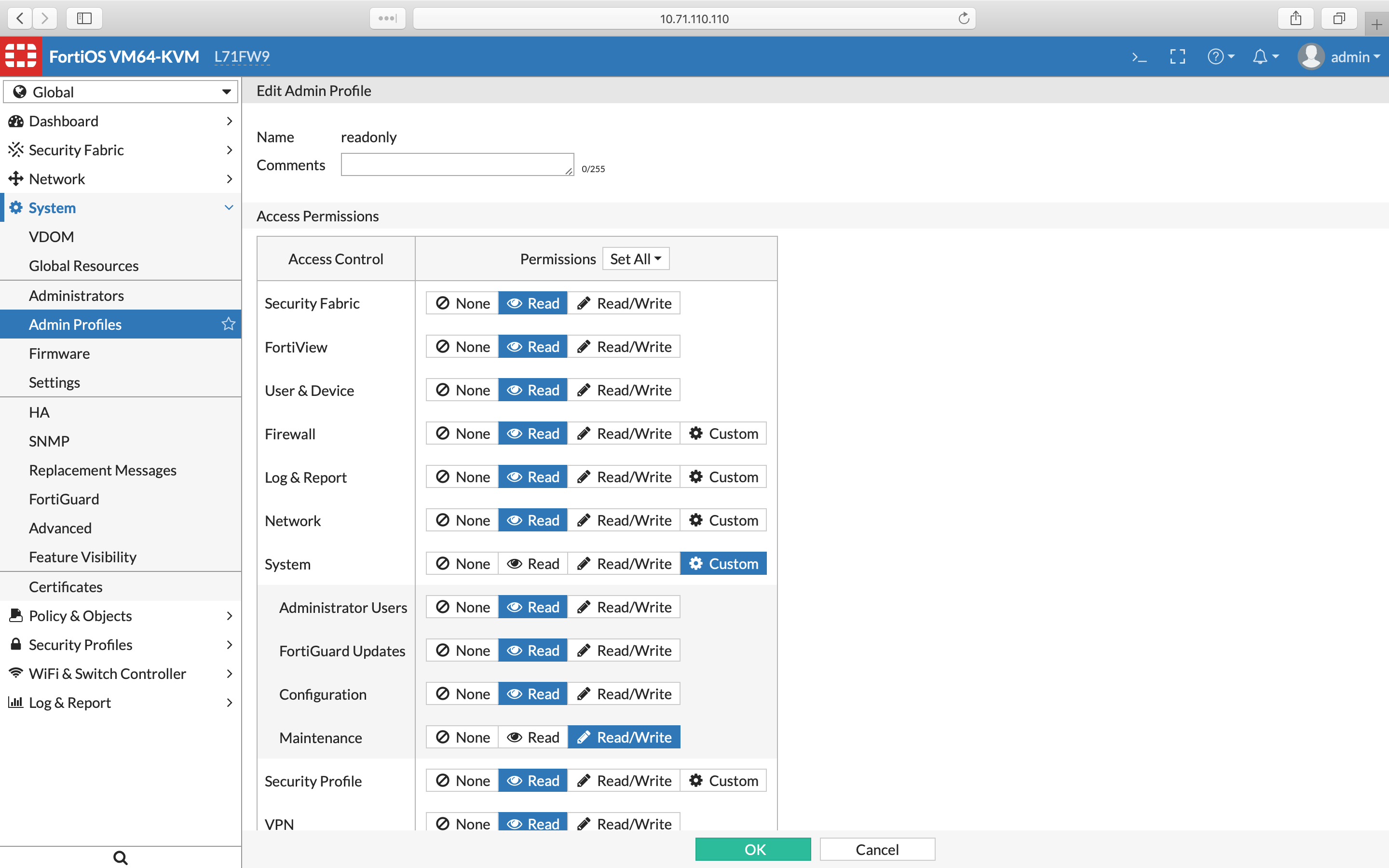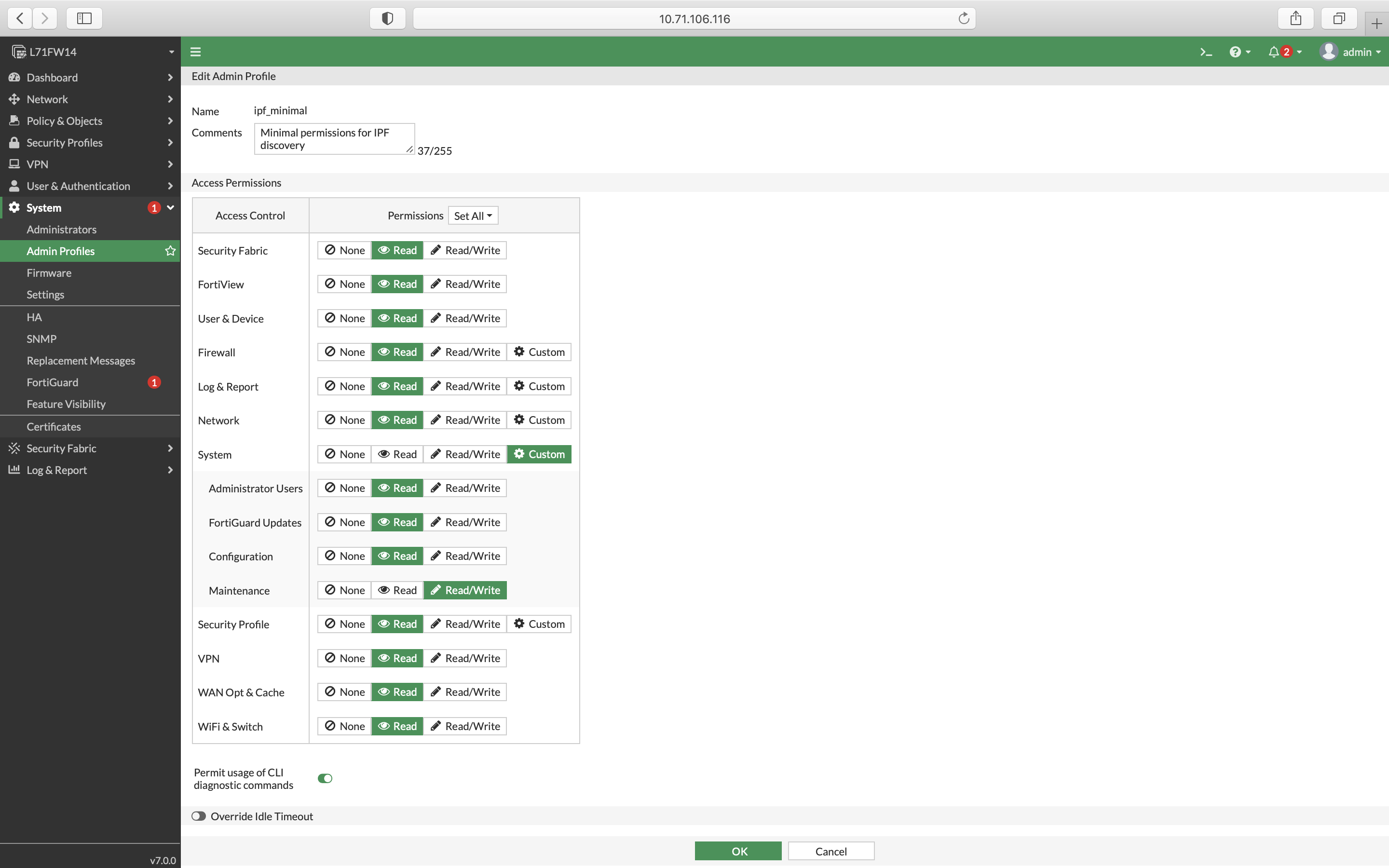Overview
FortiGate
Currently, we support FortiOS version 5.2 and higher. In this section, you
will find our recommendations regarding the setup of administrator profiles
and accounts. This is very important, especially if you use Virtual
Domains, since part of the required configuration can be done only from the
CLI.
If you plan to use a user with full read/write permissions or even with the
super_admin profile assigned (which is not recommended, except for LAB
testing), you can skip the rest of this article.
User and Profile Creation
Create an Admin Profile
First, you need to create an admin profile with read-only permissions.
Follow these steps:
-
Log in to your FortiGate. In case you have VDOMs enabled, ensure you have switched to the global scope (the relevant drop-down menu is in the top left corner).
-
Navigate to System → Admin Profiles and click + Create New.
-
Fill in a name and set all permissions to Read (you can do it by clicking the Set All drop-down menu). The only exception is the System → Maintenance permission, which must be set to Read/Write (especially if VDOMs are enabled). See the screenshots below from FortiOS versions
6.0and7.0:
Note
For FortiOS version 7.0 and higher, “permit usage of CLI diagnostic
commands” has to be enabled.
Make the Created Admin Profile Global (VDOMs Only)
If Virtual Domains (VDOMs) are enabled, follow this procedure to make the
created admin profile global. This means that administrators with this profile
will be able to work with all VDOMs. By default, only the default prof_admin
profile is set as global.
-
Connect to the FortiGate via SSH or Telnet or use the console in the top right corner (version
5.6and above) or at the dashboard (version5.4and below). -
Run the following commands to change the profile:
config global config system accprofile edit read_only set scope global end endChange the name of the previously created profile in the 3rd line accordingly.
Create an Administrator Account
-
Navigate to System → Administrators and click + Create New and select Administrator.
-
Fill in its name, select a type of authentication, and finally select the previously created Administrator profile. If you have VDOMs enabled, the Virtual Domains section below should disappear (if not, the selected profile is not global).
-
Apply other restrictions if needed and click OK.
Warning
Ensure that there is at least one interface with SSH or Telnet allowed, and this interface is accessible from the IP Fabric VM. To do so, navigate to Network → Interfaces and check the Access column.
Now it’s time to create a new snapshot or add your FortiGate to an existing
one. All VDOMs should be discovered as separate devices named
<hostname>/<VDOM_name>. If not, check the Connectivity Report in the IP
Fabric GUI and search for the IP address of your FortiGate.
Known Bugs
FortiGate 300D Interface Flap
Known affected platforms: 6.0.*
Description: Running the get system interface transceiver command on a
FortiGate 300D running version 6.0.* can cause some interfaces to flap. This
was confirmed by Fortinet, but no bug ID was received. The Transceivers task
has been disabled for any device matching this vendor, model, and version.
Fix: Upgrade to a newer version of FortiGate.
FortiSwitch
Transceivers
To get the brokenThld data, we need to run the diagnose switch modules
state-machine command. However, currently, we do not have any outputs with
meaningful data. Thus, for the FortiSwitch family, we are running this command
just to collect outputs and will add the brokenThld field as soon as we
collect usable data.

